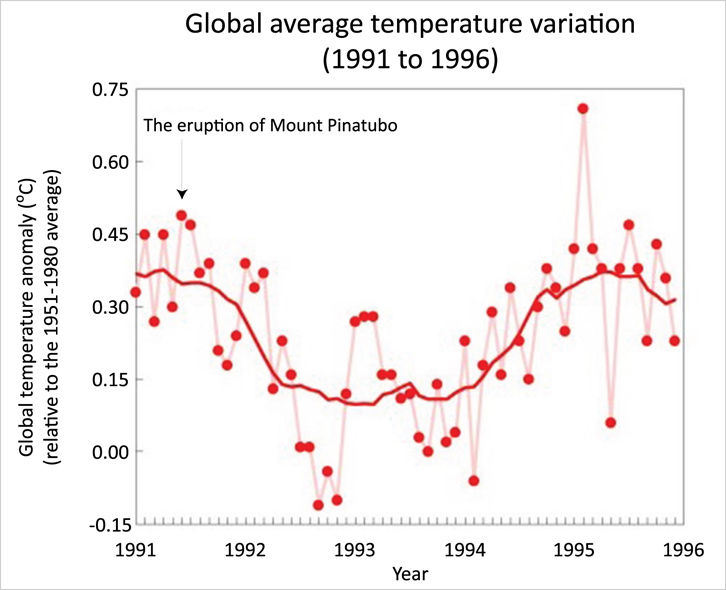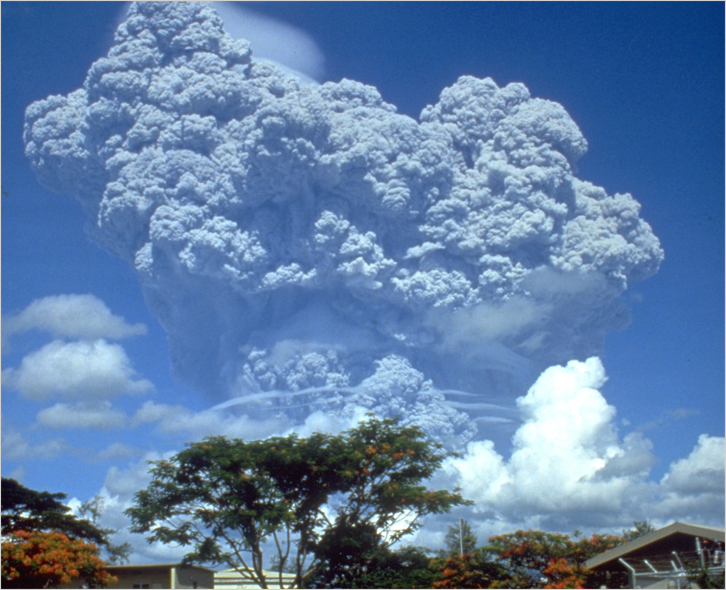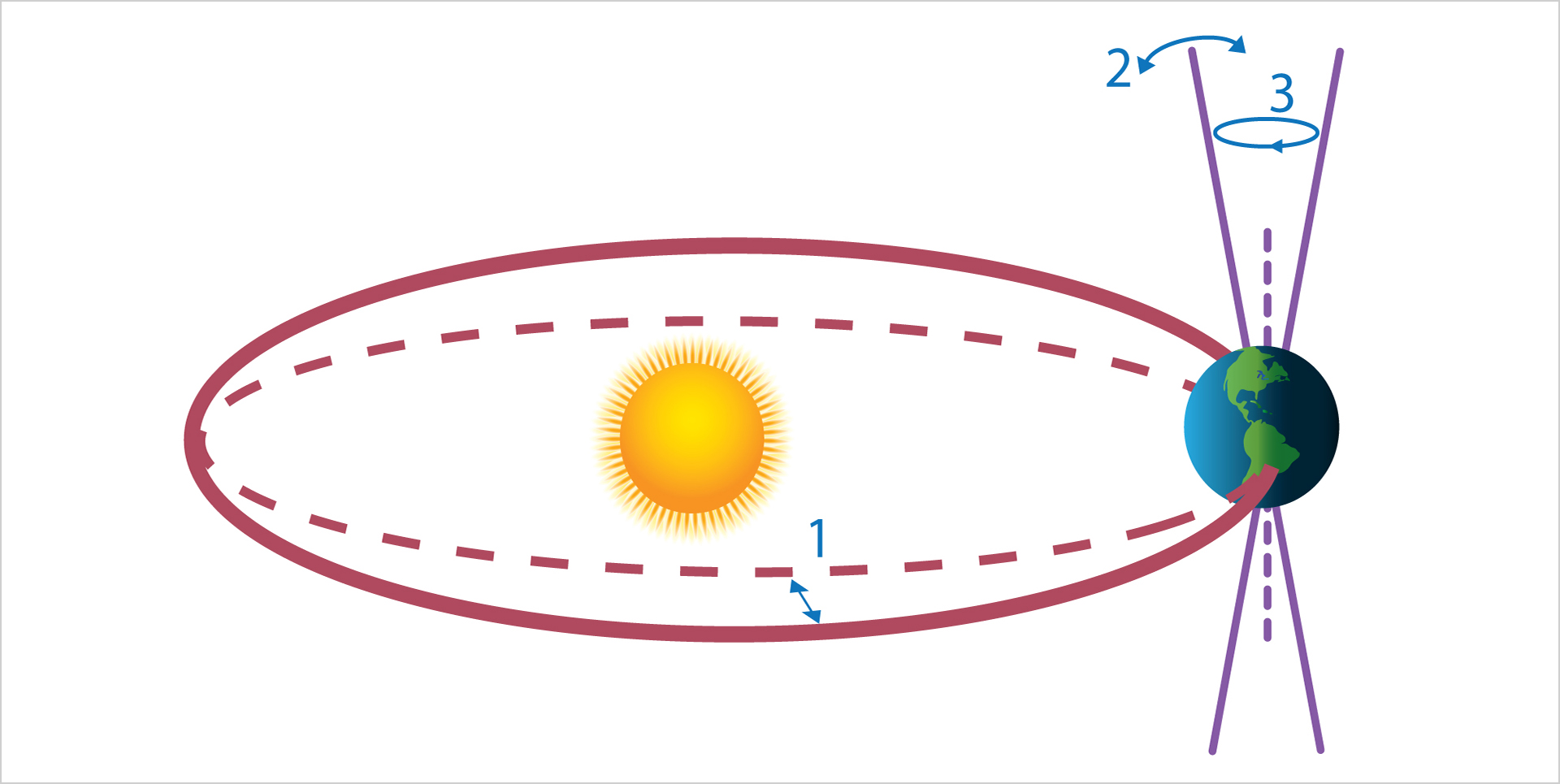Albedo
Light-coloured surfaces have higher albedo than dark-coloured ones. As shown in Fig 2.4, sea ice has a higher albedo than ocean. Snow has an even higher albedo than sea ice, reflecting around 90% of the incoming solar radiation. In cities, road surfaces with asphalt have low albedo and absorb more solar radiation.

Fig 2.4 Albedo of different surfaces iii (Data source: National Snow and Ice Data Center (NSIDC))
Volcanic eruption
Volcanic eruption is a natural phenomenon which releases large amounts of gases, volcanic ash and aerosols to the atmosphere.
In small scale eruptions, the gases and aerosols are usually well contained in the troposphere, and will likely be washed out by rain within a couple of weeks. Powerful eruptions are capable of blasting gases and aerosols into the stratosphere. The aerosols will remain in the stable stratosphere for a couple of years. These additional aerosols increase Earth’s albedo and cause a short-term cooling effect.

The eruption of Mount Pinatubo in the Philippines in 1991 is one of the examples of major volcanic eruptions leading to a decline in global average temperature. The eruption lowered the global average temperature by about 0.5°C in the following 18 months. However, the temperature returned to the pre-eruption level a few years later.
 |
 |
| Fig 2.5a Global average temperature variation iv (Source: Hong Kong Observatory (HKO)) |
Fig 2.5b The eruption of Mount Pinatubo in the Philippines (Source: U. S. Geological Survey Photograph taken by Richard P. Hoblitt.) |
★ More information
Volcanoes, weather and climate
https://www.hko.gov.hk/blog/en/archives/00000107.htm
Earth’s orbit (Milankovitch Cycles)
The Earth’s orbit around the Sun changes throughout the time. There are also natural variations in the parameters of the Earth’s rotation. In the early 20th century, Milutin Milankovitch, a Serbian astronomer, proposed that the coming and going of ice ages on Earth were closely related to three orbital geometric parameters of Earth’s revolution around the Sun. The variations of these three parameters are referred as Milankovitch Cyclesv. See Fig 2.6 for further details.

Fig 2.6 Milankovitch Cyclesvi
1.Shape of Earth’s orbit around the Sun
The first parameter is the shape of Earth’s orbit around the Sun. The orbit changes from nearly circular to elliptical in a periodical manner.
The whole cycle takes about 100,000 years. The orbital changes will affect the amount of solar energy reaching the Earth in different seasons.
2.Earth’s axial tilt
The second parameter is the tilt of Earth’s rotational axis. The axial tilt varies between 22.1° and 24.5° in a cycle of around 40,000 years.
Changes in this parameter will not alter the total amount of solar energy reaching the Earth but will affect the latitudinal distribution of insolation.
3.Precession of Earth’s rotational axis
The third parameter is the precession of Earth’s rotational axis, i.e. the wobbling of Earth’s axis. A full cycle of the wobbling takes about 26,000 years.
Changes in this parameter will also affect the latitudinal distribution of insolation.
★ More information
“Cool Met Stuff”: Milankovitch Cycles
“Climate – Albedo” feedback
“Climate – Albedo” feedback means that the change in the Earth’s albedo caused by climate change will further promote climate change, forming a vicious cycle.
The impact of the three parameters of Milankovitch Cycles on the amount of insolation reaching the high latitudes in the Northern Hemisphere, where most of the ice and snow on Earth are found, is particularly important. Variation in ice and snow cover can lead to a positive feedback.
For example, when the amount of insolation reaching the northern high latitudes decreases, summer heat is not sufficient to melt all the ice and snow precipitated in the preceding winter, leading to an overall increase of ice and snow in the course of the year. The increased ice and snow will reflect more sunlight back into space, thereby reducing the amount of heat absorbed by the Earth. This will set up a vicious cycle that supports the further growth of ice and snow.
➤ The warming rate of the Arctic is twice the global average. Positive “climate – albedo” feedback is a major cause of this phenomenon.
Global warming has led to melting of ice and snow in the Arctic, exposing the darker and less reflective surfaces of ocean and land. The Arctic thus absorbs more solar energy, enhancing warming and promoting further melting of ice and snow in a vicious cycle.
Reference: https://www.climate.gov/news-features/featured-images/2018-arctic-report-card-multi-year-stretch-record-and-near-record
Reference: https://www.hko.gov.hk/blog/en/archives/00000129.htm
Are Milankovitch Cycles responsible for recent climate change?
Milankovitch Cycles are natural variations with time scales of tens of thousands of years. It is difficult to explain the Earth’s abrupt warming in the past hundred years by Milankovitch Cycles.
According to the Milankovitch Cycles, the Earth should be on a cooling trend in the present day. This prediction is consistent with the results of paleoclimate studies which revealed that the Earth was cooling slowly for five thousand years before the Industrial Revolution. However, this slow cooling trend spanning the past five thousand years was completely reversed by the abrupt warming in the recent century.
★ More information
An ever-extending hockey stick
https://www.hko.gov.hk/blog/en/archives/00000146.htm



